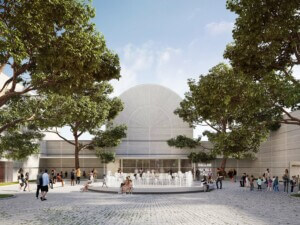Toronto-headquartered Zeidler Architecture in association with David Chipperfield Architects (DCA) has triumphed in an international competition seeking transformative design concepts for Block 2, a roughly 2.4-acre redevelopment zone in downtown Ottawa directly opposite Parliament Hill in the heart of the Canadian capital city’s Parliamentary Precinct.
Deemed the “most prestigious property in Canada,” Block 2 is comprised of twin vacant parcels and 11 existing governmental buildings of varying sizes. While some of the buildings in question are heritage-listed, all are “functionally obsolete” and ripe for revitalization and reuse. Per a formal announcement made yesterday by governmental department Public Services and Procurement Canada (PSPC), the competition-winning vision from Zeidler Architecture and DCA “best responded to the complex and historical considerations of the area,” while also “demonstrating a high level of respect for and understanding of the significance of a future Indigenous Peoples’ Space” at 100 Wellington Street, a long-vacant, 1930s-era Beaux-Arts structure at the center of Block 2 that was built in 1931 as the first permanent United States Embassy in Canada.
Block 2 will emerge from its reimagining as an “innovative complex that will meet the needs of a 21st-century parliamentary democracy in a way that respects our past while also embracing our future” that, per the PSPC, will also “allow for the future consolidation of parliamentary accommodations,” including space for the Library of Parliament. In addition to office space for the Senate and House of Commons, another key component of the scheme is revamped retail space along the historic Sparks Street pedestrian mall.
As envisioned by the Zeidler Architecture- and DCA-led team, all existing heritage buildings at the site will be retained and repurposed, joined by a sprawling “People’s Square” and a mass timber structure, the Garden Atrium, that fuses together several existing buildings at the site while doubling as a shared indoor social space.
“Our proposal weaves together old and new to create a rich tapestry of past, present, and future,” the proposal explained. “In the spirit of responsible stewardship, existing structures are given fresh purpose. The value of this built heritage is unlocked by a new net-zero building and public spaces that represent a bold new architectural expression of Canadian identity.”
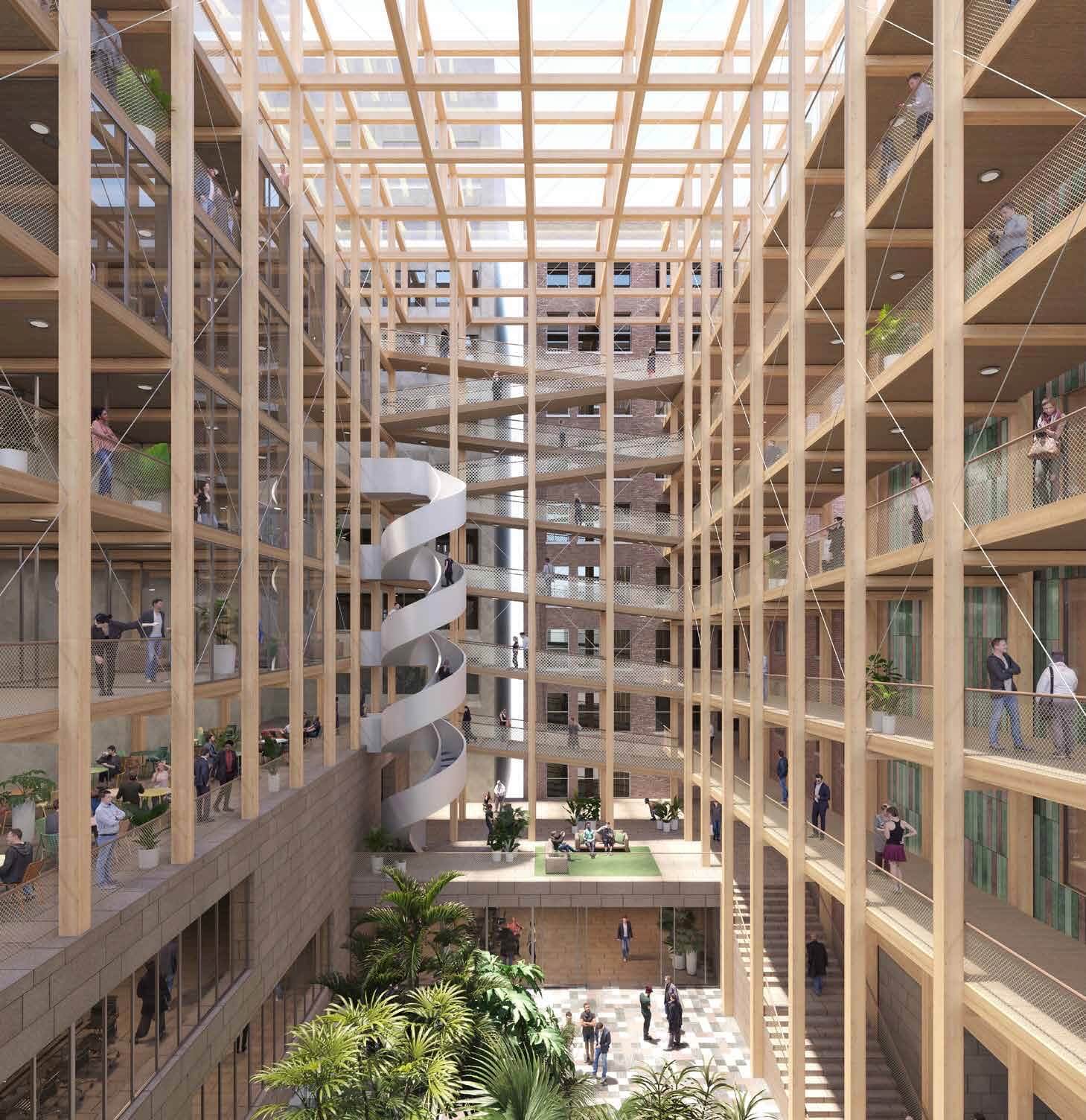
“The redevelopment of Block 2 will transform this mix of aging buildings into modern, inclusive, sustainable, secure and accessible accommodations for the Parliament of Canada,” said Filomena Tassi, Minister of Public Services and Procurement, in a congratulatory statement. “I truly hope that all Canadians will be able to visit and experience the chosen design for years to come.”
Yesterday’s announcement marked the conclusion of a closely watched competition process overseen by the Royal Architecture Institute of Canada that officially kicked off last spring.
In May 2022, the PSPC revealed an, ahem, blockbuster longlist of 12 design teams tapped to participate in the competition; each was invited to formally submit initial design concepts following a Request for Qualifications (RFQ) process. Canadian firms were naturally well-represented among the teams and each included at least one domestic partner. In addition to Zeidler Architecture, they included, among others: Diamond Schmitt Architects, Partisans, BDP Quadrangle, Provencher Roy + Associés Architectes Inc., and KPMB, with the latter two comprising the only single-firm teams in the competition. The handful of competing teams led by non-Canadian firms (with Canadian partners) included the New York office of British practice Grimshaw Architects, Melbourne’s Hassell Ltd., and WilkinsonEyre and Hopkins Architects, both headquartered in London. Joining DCA, which maintains studios in Milan, Berlin, and Shanghai in addition to its London home office, other non-Canadian longlisted firms of note were Foster + Partners, Bjarke Ingels Group (BIG), Herzog & de Meuron, Behnisch Architekten, and Renzo Piano Building Workshop.
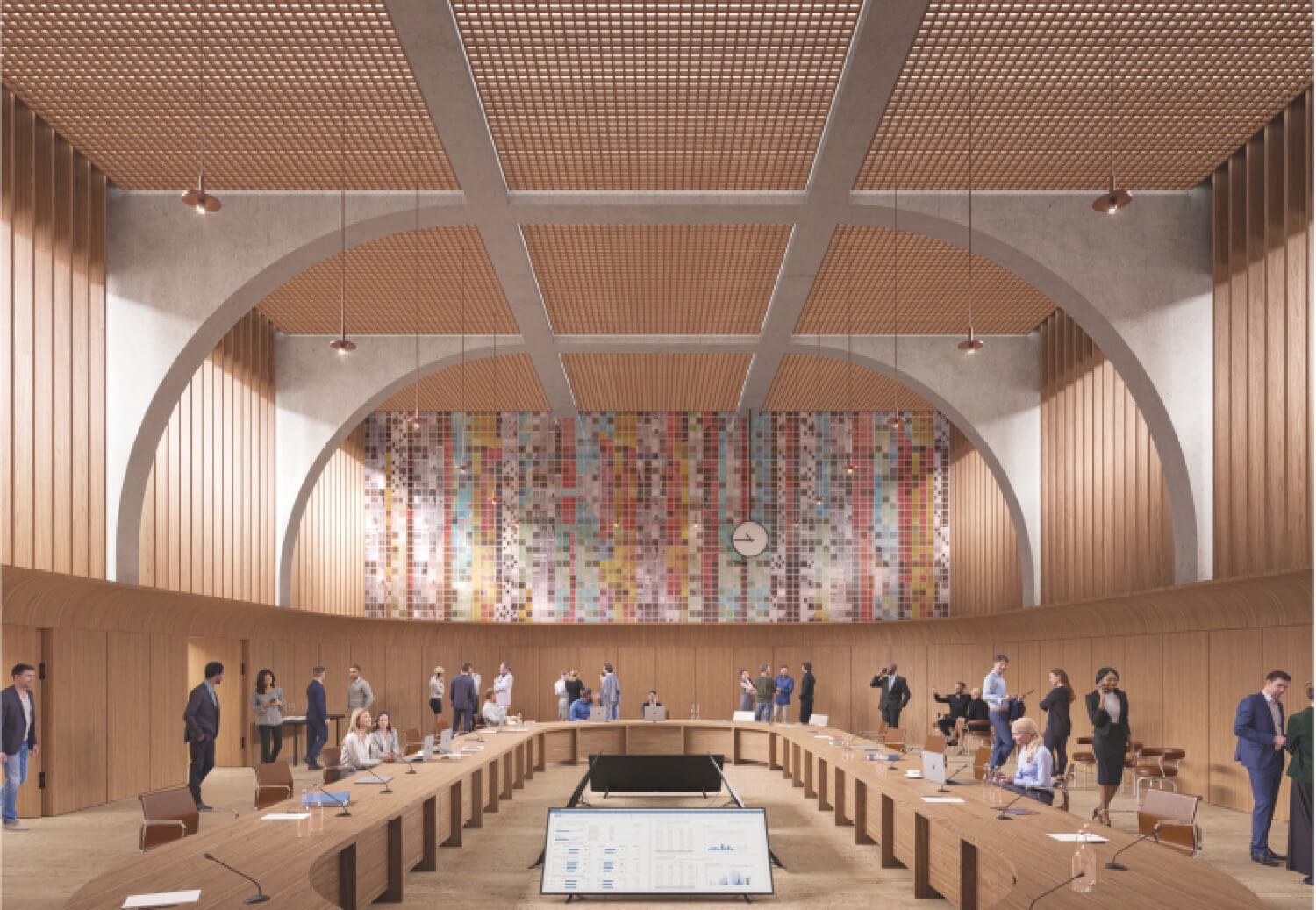
Fast-forward to just last month when a shortlist of six contenders was revealed. Joining Zeidler Architecture and DCA in the finalist ranks were: Diamond Schmitt Architects in joint venture with BIG, KWC Architects, and ERA Architects; Provencher Roy; Watson MacEwen Teramura Architects in a joint venture with Behnisch Architekten; Wilkinson Eyre in association with IDEA Inc; and NEUF Architects in joint venture with Renzo Piano Building Workshop. Each of the six shortlisted teams then moved onto the competition’s second stage, which entailed presenting refined design concepts to an independent competition jury and the Canadian public via a public presentation process. Later in April, the jury convened to select its top three contenders and provide an “official recommendation” to the PSPC.
Ultimately taking second and third place in the competition were, the NEUF Architects/Renzo Piano Building Workshop and Watson MacEwen Teramura Architects/Behnisch Architekten teams, respectively.
The Zeidler Architecture/DCA team is joined two design firms acting as key project sub-consultants: Montreal-based EVOQ Architecture, which will serve as a heritage advisor, and Two Row Architect in the role of Indigenous consultant.
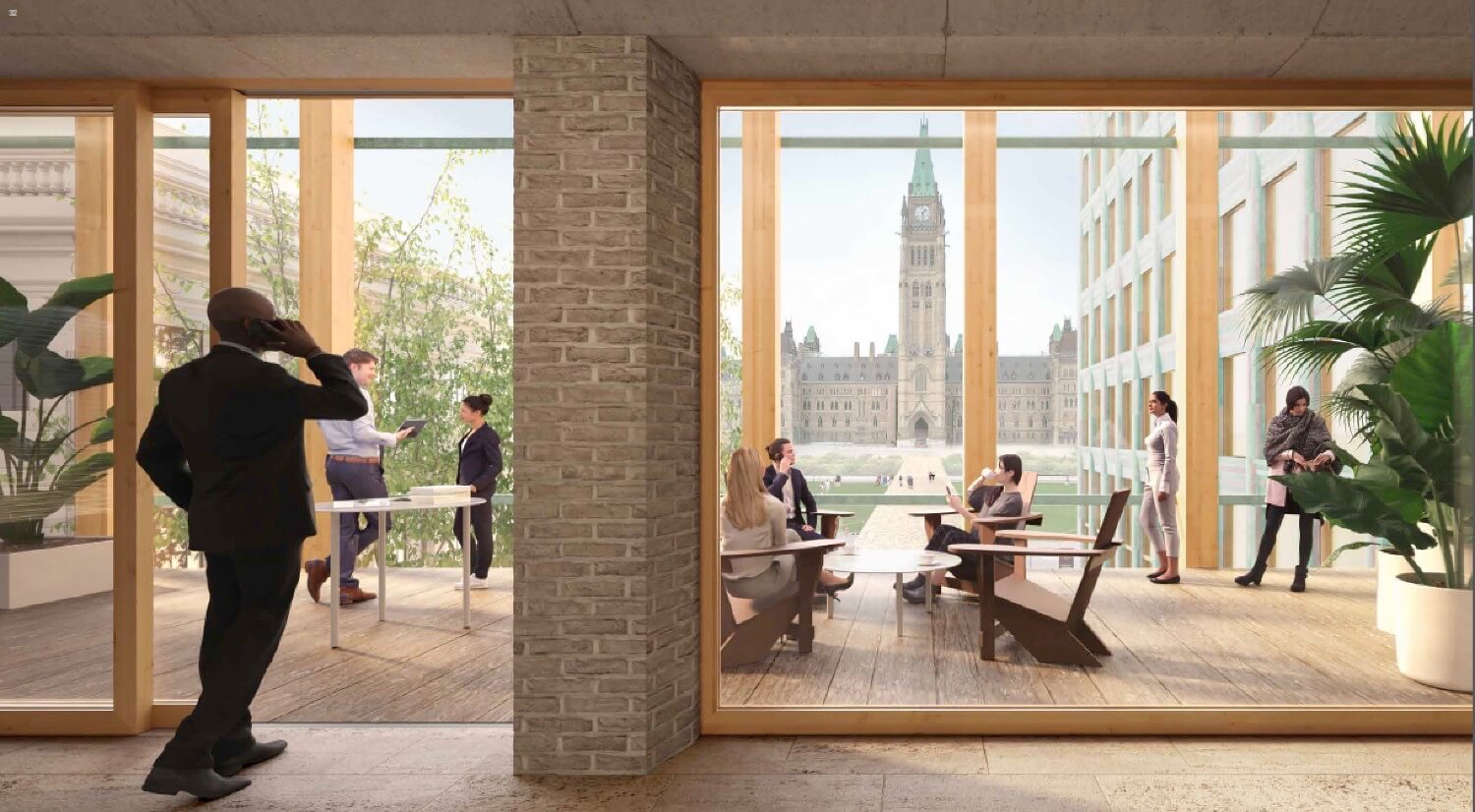
“As Canadians and as architects, we recognize the privilege of being able to craft a design on a site with national significance. This is a rare opportunity, and our entire team understand the responsibility of representing the Canadian government and the Canadian people,” said Vaidila Banelis, senior partner at Zeidler Architecture, in a statement shared by Canadian Architect. “Our vision is purpose-led and people-led, uniquely Canadian and contemporary in style for a nation that is confident in itself and its future – a future that demonstrates the best that Canada can be: inclusive, accepting of difference, resilient and in harmony with nature.”
“Through this project we have sought to develop an urban and architectural response that is both respectful and radical, embracing the past and looking to the future, motivated by concerns for the environment and the ideals of community,” added David Chipperfield.
“We are grateful to the jury for recognising the values of our scheme,” Chipperfield continued. “It has been a rigorous, stimulating and enjoyable competition and we look forward to working with the Government of Canada on the next stage of the process.”
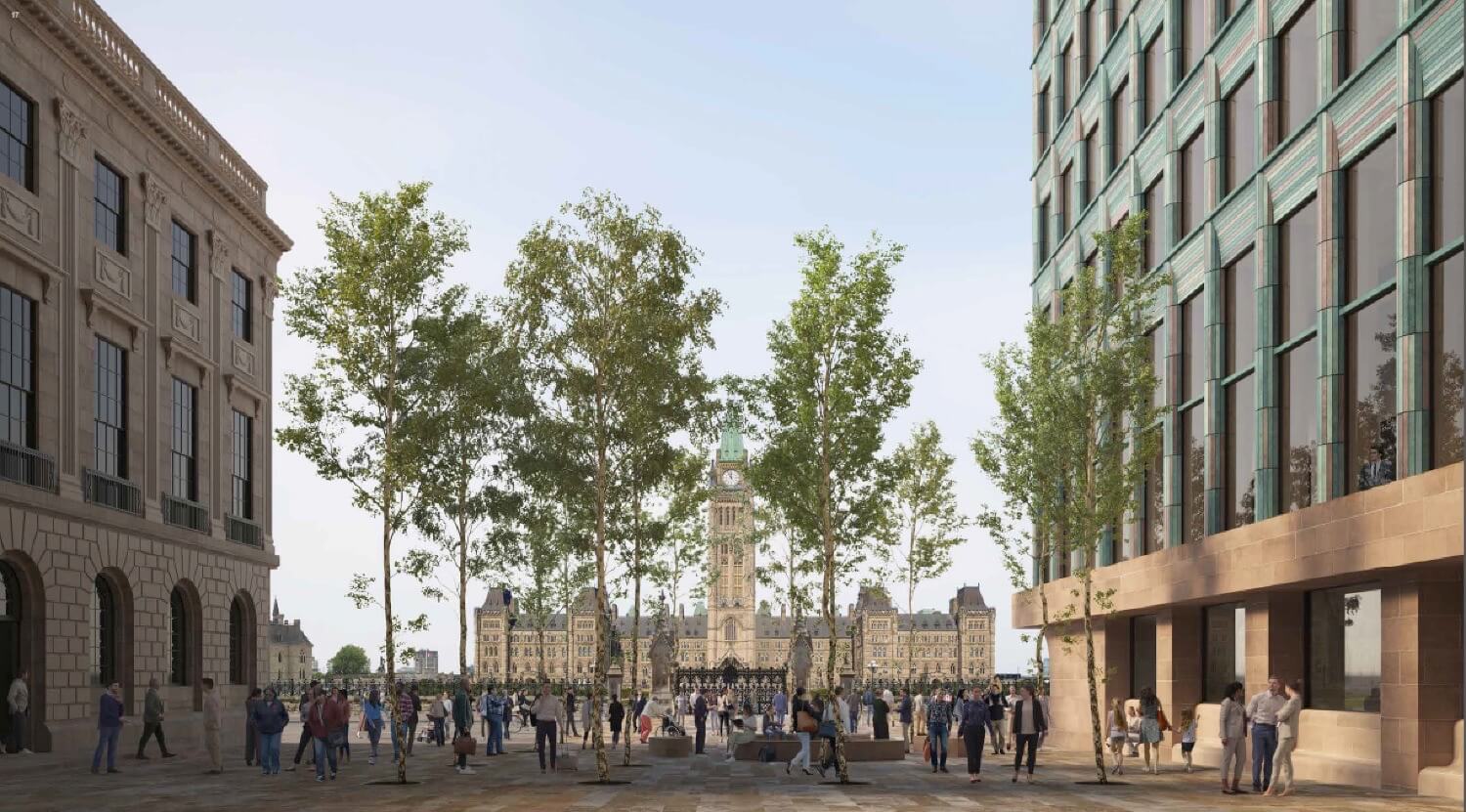
As for that all-important next stage of the process mentioned by Chipperfield, it will entail Zeidler Architecture and DCA entering contract negotiations with PSPC so that the winning design concept can be further tweaked and refined; construction work is anticipated to kick off at the site in 18 to 24 months. The estimated cost of the Block 2 redevelopment project is roughly $335 million ($430 million CAD).
The selection of the Zeidler Archiecture/DCA proposal was greeted with praise from Canadian critics following yesterday’s reveal, including the Globe & Mail’s Alex Bozikovik. He called DCA a “brilliant choice” for a large-scale redevelopment project focusing on the sensitive commingling of old and new, and noted that Block 2 overhaul “promises to deliver the most interesting and thoughtful public architecture Canada has seen in a generation.”








